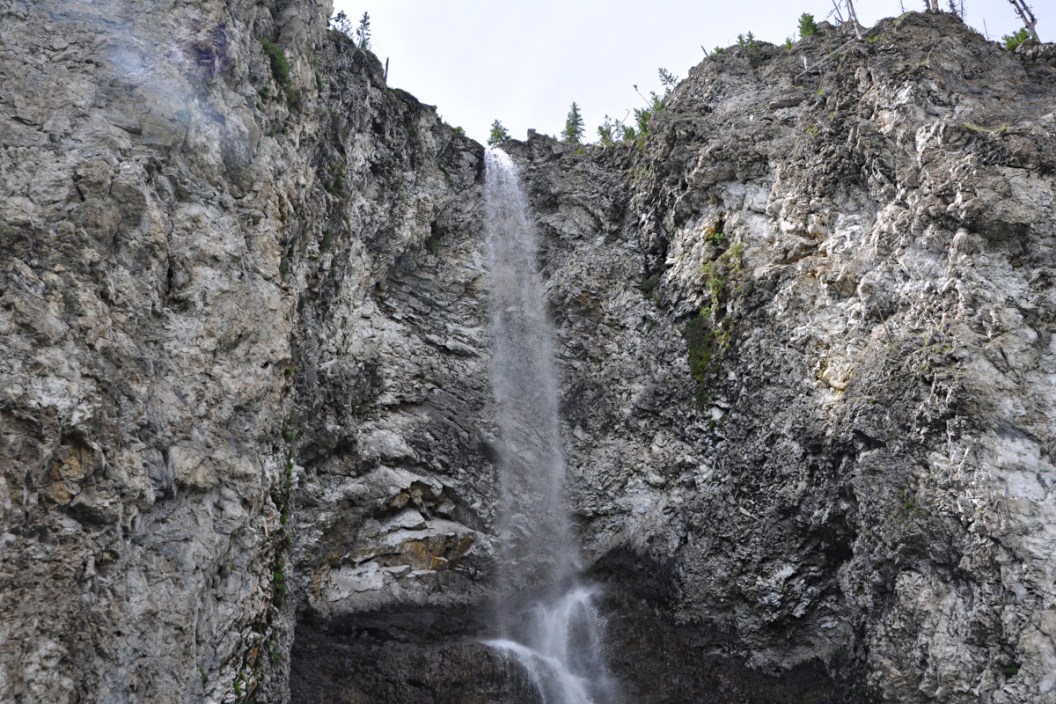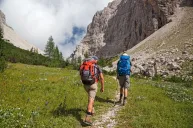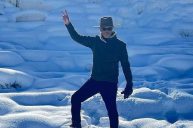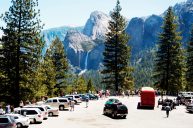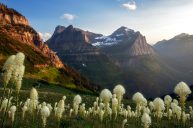There's no question about it, Yellowstone National Park in Wyoming is one of our favorite places on Earth. It's just a real shame that most tourists don't take the time to explore this massive piece of wilderness any further than the roads and parking lots that line the numerous hot springs and geyser basins scattered throughout this active volcano. We get it, most people only have a limited amount of time to explore, and they want to see everything. However, it's worth blocking out some time to get at least one decent hike in while you are at the park. To say that you got to experience some of Yellowstone's natural wonders beyond just what's situated within a stone's throw of the Grand Loop Road.
The only question is which hike is best for those who are short on time in the park. Well, we've got a great suggestion in the hike along the Fairy Falls trails. This hike will take you a good distance from the rest of the tourists that like to crowd the park in the summer months. At the same time, it's an easily doable day trip in three to five hours round trip. It's also takes you to one of the prettier hidden waterfalls in the park, making the long journey worth the effort. This is everything you need to know about Yellowstone's Fairy Falls hike.
Where Is Fairy Falls?
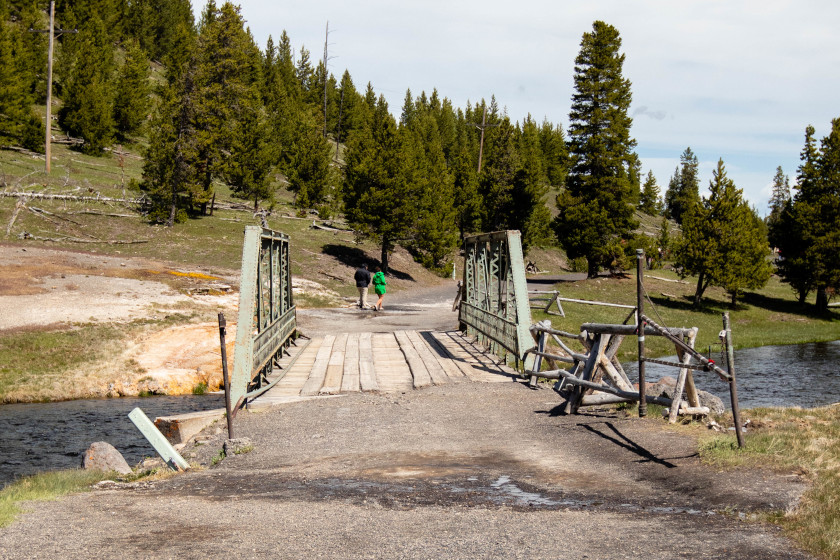
The bridge to Fairy Falls trail. Michael-Tatman via Getty Images
The great thing about this hike is that it's located close to several other major thermal features that most people want to see on their visit to our nation's first National Park anyway. The Fairy Falls trailhead is located only about six miles north of the Upper Geyser Basin, where famous geysers like Old Faithful are located. The Fairy Falls Parking lot is located right next to the Midway Geyser Basin, which houses famous features like Excelsior Geyser crater and the gorgeous Grand Prismatic Spring, the third-largest hot spring in the world. The hiking trail to Fairy Falls gives a nice, slightly elevated view of these features from the backside of the basin, something many people don't see because they stick to the boardwalks instead.
In any case, the National Park Service maintains a small, well-marked, and maintained parking area just south of the basin. It should be noted that buses and RVs are not allowed in the Fairy Falls parking lot according to the signs posted near the entrance. If you're driving a larger vehicle, you could park at the Midway Geyser Basin's larger lot, and walk along the road to the trailhead at the smaller lot. Although this will add about three miles to your hike in total.
The NPS notes you can also park at the end of Fountain Flat Drive and hike to the spur for Fairy Falls from there. This route will take you past Goose Lake and 0D5, a small hike-in campground. It adds about 3.6 miles to the hike, so this is probably the better option for those looking to spend a night in the wilderness in the park.
How Long is the Hike to Fairy Falls?
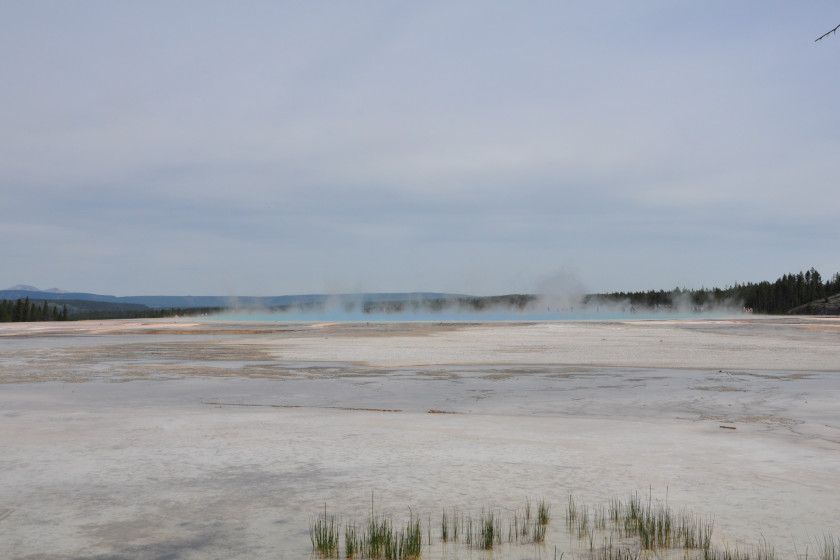
Grand Prismatic Spring from the Fairy Falls Trail - Photo by Travis Smola
If you're parking at the Fairy Falls lot, you're looking at about five miles round trip for this one. It's roughly 2.5 miles one way and then back again. Most people hike about 5.5 to 6.5 miles in total. The trail does not loop around, so you'll need to backtrack the way you came on the way back. For most people, this hike should take between three and five hours. The nice thing about this one is that there is virtually no part of the trail that has any significant elevation gain. It took me about 3.5 hours to complete the whole hike. You won't need much gear. Just a daypack and maybe some water. Don't forget bear spray (more on that later).
The trail crosses a small footbridge over the Firehole River and from there, the trail is mostly hard packed dirt. The trail can get a little soggy the closer you get to the falls, even in July and August when it's hotter and dry. It was soggy when I hiked it in mid June. I highly recommend a good pair of hiking boots that has some water resistant or waterproof qualities to it, especially in the spring when the trail at its wettest. It's not the most scenic trail we've ever been on, at least not until you get to the waterfalls. However, it is a fun and easy way to see some portions of the park that many visitors never get to see.
One thing that's noticeable is the small stature of many of the trees along the Fairy Falls trail. This is an old lodgepole pine forest that has only grown up in the last 40 years or so. The entire area was engulfed in the famous 1988 Yellowstone wildfire that naturally re-seeded large sections of the park. As you get near the end of the trail and the falls, you'll be able to see some scorched trees that are remarkably still standing from that event. This hike is a great testament to how nature heals herself. In addition to the young trees, wildflowers are abundant and common if you make the hike at the right time of year.
You can also extend the hike slightly if you want to see Imperial Geyser, which another .80 miles further down the trail past the falls. There's also Spray Geyser along this same spur trail that loops around before coming back to Fairy Falls. Imperial is said to reach heights of 35 feet when it does erupt, although it's said to be rare these days. There are reports that Spray Geyser erupts often, giving a good chance to witness one of the lesser-seen thermal features of the Yellowstone Caldera in action.
The Best Time to Hike to Fairy Falls and Bear Safety
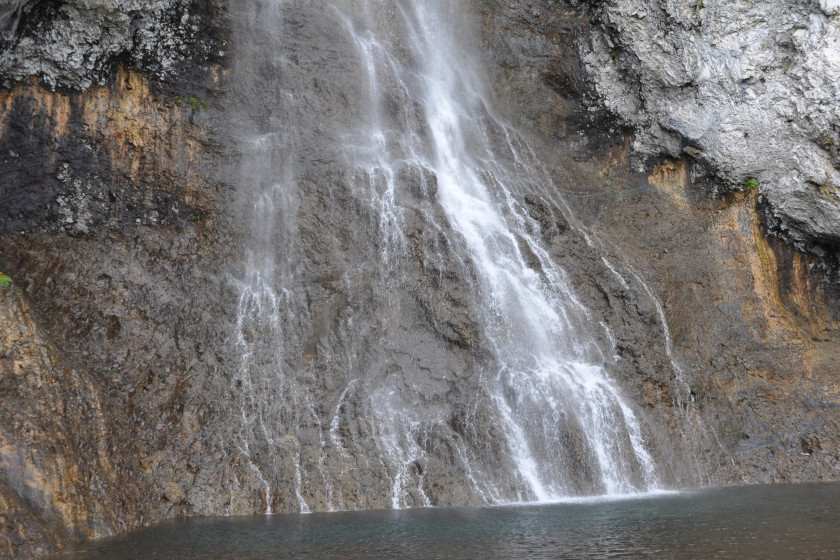
Travis Smola
The only bad thing about this day hike is that it's not one you can do all year-round. Unfortunately, Fairy Falls is in one of Yellowstone's bear management areas that subjects it to seasonal closures. That simply means that the area sees a lot of prey animals like elk and bison, and the NPS shuts down the trail to lessen the chances of hikers running into a grizzly or black bear on a carcass. Yellowstone officially closes the area from March 10 through the Friday of Memorial Day weekend every year. It's a shame because it means no spring hikes. That means most hikers are going to be limited to the busier summer months.
If you want to avoid people, try to get into the park just before it closes in October. That's usually the slowest part of the tourist season. You do have to be careful about your scheduling because the NPS can slam the gates shut on very short notice that time of year, but if you can sneak in right before the closing, you're in for a quiet, enjoyable treat.
The other option for Fairy Falls is to wait for the winter months and cross country ski to the falls along the 10-mile Fairy Falls Ski trail. The NPS says this trail takes about six to eight hours to complete. Yellowstone is gorgeous with a dusting of snow, and the falls will usually partially freeze up, making for a more unique experience.
Going back to bear safety for a moment, the greater Firehole area is a hotspot for bear activity in season. The NPS recommends walking with a group of at least four people for safety, as a bear is less likely to attack a larger group of people.
It's also a good idea to carry bear spray for defense in case of a charging bruin. Most stores around the park carry it for sale. However, you cannot take bear spray on an airplane, so if you're flying in or out for your Yellowstone adventures, it's not advisable to buy some. Don't worry, there's an option for rental. Just be strategic about where you pick up your rental. The only pick up spot for bear spray rentals is in the park is Canyon Village, which is about the middle of the park. That works fine if you're driving in from Cody through the east gate. However, Yellowstone is a big park, and Canyon Village is a bit out of the way if you're coming into the park from any other direction. We recommend picking up a rental can in West Yellowstone if coming from the west gate, or in Jackson, or the Jackson Hole Airport if you're coming up from the south from Grand Teton National Park. The good news is, there are drop-off points when you're done carrying your rental scattered all over the park. We're hoping in the future that more pick-up points are added throughout the park, but for now, these are the best options if you're going to spend any time in the backcountry.
For more outdoor content from Travis Smola, be sure to follow him on Twitter and Instagram For original videos, check out his Geocaching and Outdoors with Travis YouTube channels.
